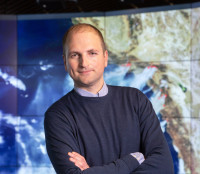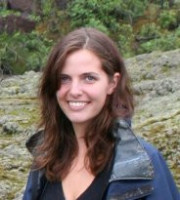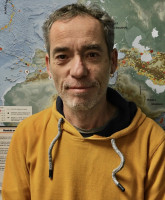Natural Catastrophes
Volcanic Eruption
Landslides & Mudflows
AXA Projects
France
SEDIMER - Sediment-related Disasters and Hazards following the 2010 centennial eruption of Merapi Volcano (Indonesia)
Because they pose a constant threat to downstream villages and towns, lahars are one of the most destructive phenomena associated with composite volcanoes all around the world. What is more, despite their regular occurrence, the behavior and propagation of rain-triggered lahars are poorly understood, thus impeding any consistent assessment of their political and socioeconomic costs for local residents. Yet, that was before Prof. Lavigne set out to study one of the most active volcanoes in the world: Mt. Merapi in Indonesia.
Indeed, due to a devastating eruption in 2010, it is now crucial to determine what may happen in the next five years to the river valleys downstream from Mt. Merapi. Prof. Lavigne and his team are seizing this unique opportunity to compile a database on lahar occurrence thanks to a collaborative and multi-disciplinary study gathering experienced international experts and young scientists from seven countries including Indonesia. Their innovative methods rely on a combination of high-tech instrumentation and socioeconomic calculations to model and quantify the impact of lahars on local populations.
Thanks to this integrative approach, Prof. Lavigne seeks to obtain a comprehensive understanding of the occurrences and impacts of lahars with results which may immediately be used by policy makers for land use and emergency response planning. Eventually, his work might help reduce exposure and improve the resilience of local populations to threats from lahars.
Lahars: Connecting People
To add or modify information on this page, please contact us at the following address: community.research@axa.com

Franck
LAVIGNE
Institution
Centre National de la Recherche Scientifique
Université Paris 1
Country
France
Nationality
French
Related articles
Natural Catastrophes
Climate Change
Wildfires
Climate Adaptation & Resilience
Global Warming
AXA Chair
Greece
AXA Chair in Wildfires and Climate
The consequences of climate change have never been as substantial and visible in such a wide range of places around ... Read more

Apostolos
VOULGARAKIS
Technical University of Crete
Natural Catastrophes
Volcanic Eruption
Joint Research Initiative
United Kingdom
2018.12.31
Volcanic Risk Assessment in Asia
Assessing volcanic ash hazard footprints in Asia In the language of insurance, a large volcanic ash plume represents what is... Read more

Susanna
JENKINS
